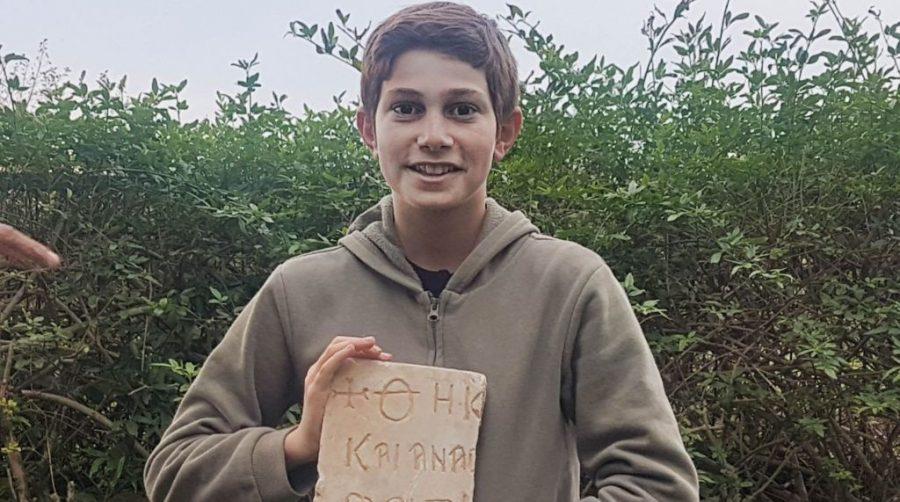Israeli teen stumbles on Greek antiquity while foraging for mushrooms
Published January 23, 2020
JERUSALEM (JTA) — An Israeli seventh-grader who was foraging for mushrooms near his home unearthed a marble slab with a Greek inscription from the Byzantine period.
Stav Meir, 13, of Caesarea, found the artifact last week, according to a statement issued Wednesday by the Israel Antiquities Authority.
Stav saw the smooth stone sticking out of the ground, likely unearthed due to days of heavy rains. His archaeology class in school him realize that the piece was an antiquity and he immediately reported his discovery. An archaeologist came to recover the artifact.
Peter Gendelman, a Caesarea researcher at the Israel Antiquities Authority, identified the piece as a tombstone burial inscription, which indicates the grave’s location in the cemetery and the identity of the deceased.
“Already, in ancient times, Caesarea was a center of attraction for a wealthy population. The quality of the slab discovered by Stav indicates the wealthy status of the person entombed, as well as the customs and beliefs of inhabitants of Caesarea in the Byzantine period,” Gendelman said in a statement. “This inscription joins a large collection of burial inscriptions previously discovered around ancient Caesarea.”
Stav has received a certificate of appreciation for his good citizenship and has been invited with his class for a special lesson by the Israel Antiquities Authority about his discovery.















